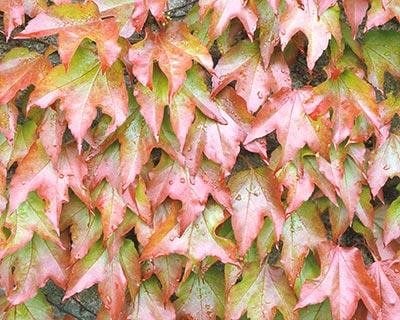Parthenocissus
Parthenocissus, commonly called Boston ivies or Virginia creepers, have gained a reputation as garden thugs. This is partly well deserved – some cultivars can be very vigorous – but there’s more to this genus than luxurious growth, and their dip in popularity means that some fantastic cultivars are at risk of being lost unless they are conserved.
Recalling the beginning of his infatuation, Matthew says, “I vividly remember approaching the main building at the JC Raulston Arboretum in North Carolina and being struck by a climbing plant there. It had white frosted
Other foliage variants include P. quinquefolia ‘Yellow Wall’ which has leaves that turn a buttery yellow in autumn, though only fairly briefly. Matthew Pottage is more enthusiastic about P. quinquefolia STAR SHOWERS (‘Monham’) which he describes as “the most outrageous” cultivar in the collection for its leaves which bear a cream-splashed variegation and turn pink in autumn. However, he warns it is not the best “clinger” and has a habit of falling off a wall if not secured with a framework of wires.
Future ambitions for the collection
“I’m eager to discover cultivars of the handsome Chinese species, P. henryana,” says Matt. The closest he has come is a cultivar named ‘Marlene’ which was said to belong to this species but turned out to be a selection of Cissus striata, a totally different plant.
And what of ‘Ginza Lights’, the strange cultivar that started Matthew Pottage on his voyage of discovery and conservation? A shout out asking for propagation material was heard at the Sir Harold Hillier Gardens in Hampshire from where



